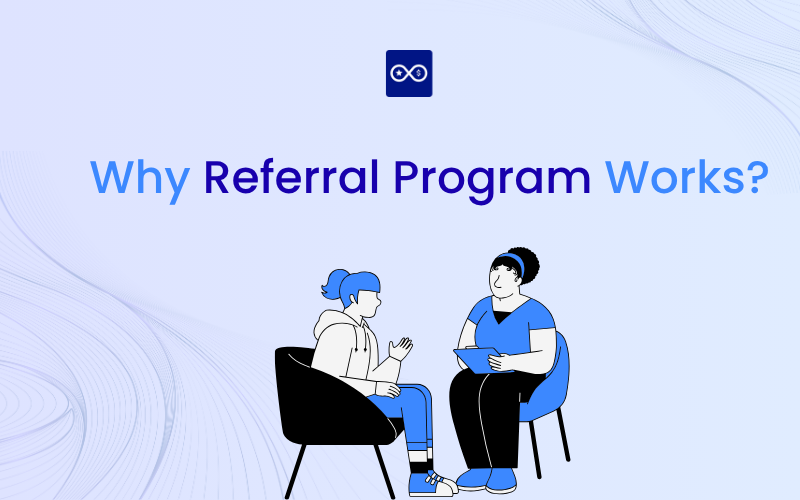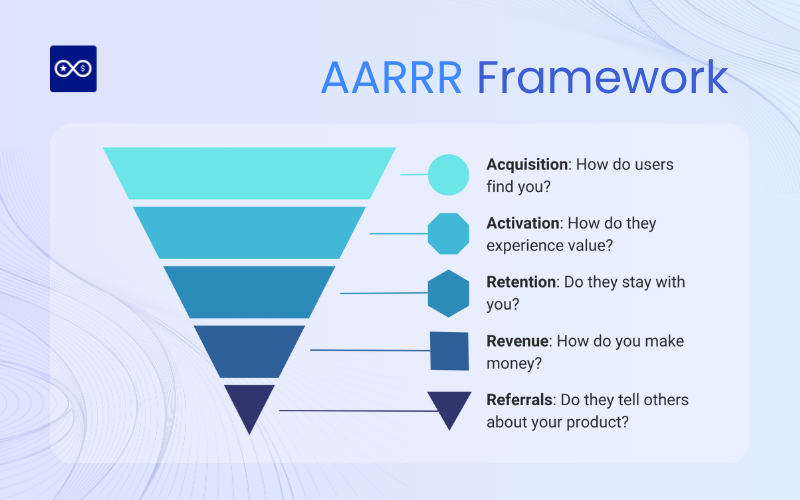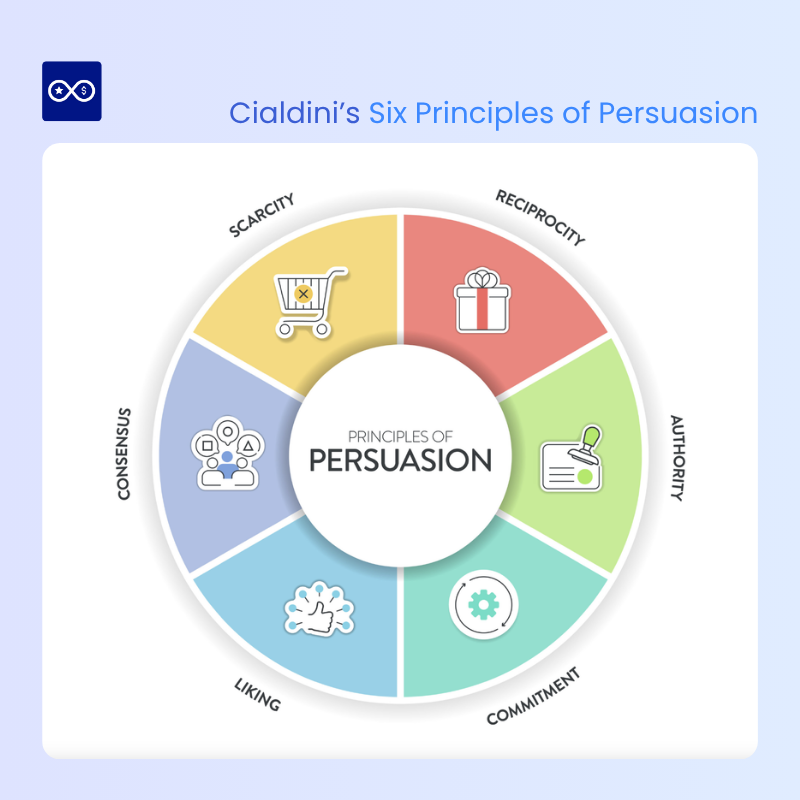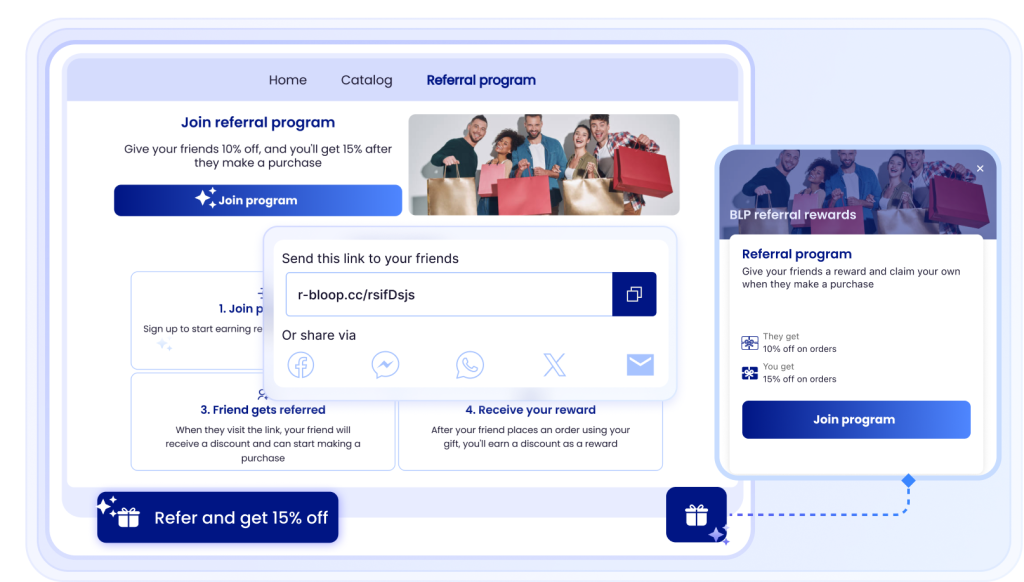Why Referral Programs Work? The Psychology Behind & How to Apply for E-commerce

In today’s crowded e-commerce world, businesses are constantly asking: why referral program works? The answer lies in both economics and psychology. Referral programs don’t just reduce acquisition costs; they also deliver higher-quality customers who come with built-in trust and loyalty. Unlike traditional advertising, referrals tap into social proof, friends recommending to friends, making them one of the most cost-effective and sustainable growth engines for online businesses. By understanding the deeper psychological drivers behind referrals, brands can unlock programs that not only reward customers but also build long-term advocacy.
>> You may also like:
- 20+ Referral Program Ideas For eCommerce That Definitely Works in 2026
- How To Promote a Referral Program For Your Shopify Stores? (15+ Free & Paid Tactics That Work)
Why Referral Programs (RAF) Work: Economic and Trust Benefits
Strong Source for Customer Acquisition (ROI)
Referral programs are considered an incredibly strong source for customer acquisition. These programs provide significant financial advantages to businesses:
- Low Acquisition Costs: Companies can acquire new customers at low costs.
- High ROI Potential: The Return on Investment (ROI) can be “off the charts”. This high ROI is often achieved when companies reward referring or referred customers with currency used by the main platform, such as credit card points or store credit.
- Incentivized Spending: Customers acquired this way are “pre-incentivized to spend that currency” within the platform, further maximizing the return on investment.
- Strategic Importance: Referrals are recognized as a core metric of pirate metrics (AARRR framework).

Superior Customer Quality
Referral programs succeed because they rely on existing customer relationships, making the acquired customers inherently more valuable and reliable than those gained through traditional advertising channels.
Trust and Social Proof
Referral programs leverage customers’ personal networks and the psychological principle of social proof. When a product or service is recommended by a trusted source (like a friend or family member), that recommendation “carries more weight than traditional marketing”. A significant majority of consumers, 83%, trust recommendations from friends and family over other forms of advertising.
Loyalty and Value Metrics
Referred customers consistently demonstrate greater worth and loyalty:
- Referred customers have a 16% higher lifetime value compared to non-referred customers.
- They show 37% higher retention rates than customers acquired through other channels.
- The conversion rate for referrals is 3 times higher than the average lead conversion rate across industries.
- Word-of-mouth marketing, which referrals generate, can result in more than twice the sales of paid advertising.
Product Validation and Quality Control
The success of a referral program is directly tied to the quality and suitability of the product, forcing the company to maintain high standards.
- Reputation Risk (Social Capital): The primary psychological aspect driving customer care is social capital. A referrer is putting their reputation amongst their social group on the line. If the product turns out poorly and the friend says it sucks, the referrer risks damaging their social standing.
- Pickiness based on Barrier to Entry: Customers are surprisingly picky about who they refer. This selectiveness is amplified if the product is a high-barrier-to-entry product (for example, due to high cost or a complex process).
That is an excellent section to detail! The true magic of referral programs lies not in the discount offered, but in tapping into the deep, hard-wired instincts of human behavior. By understanding this psychology, you can design programs that feel natural and compelling to your customers.
The Psychology Behind Referral Programs
Cialdini’s Six Principles of Persuasion
At its core, the phenomenal effectiveness of customer referral programs has “nothing to do with rationality and everything to do with basic human psychology”. Experts suggest that the inherent motivation for people to say “yes” is actually hard-wired into our brains. This means that referral programs leverage ancient human instincts, ensuring they remain effective even 100 years from now.
To create a powerful program, we look to Dr. Robert Cialdini, who outlined six universal principles that ethically govern how people are influenced and persuaded:
- Social Proof: People inherently desire to fit in and tend to “follow the crowd” or look to others in their social circles to guide their own actions and decisions.
- Authority: We have a tendency to obey “perceived experts” or people who are more knowledgeable on a topic than we are.
- Reciprocity: We are hard-wired to react positively to a gift and feel “obligated to return favors” or pay back what we receive.
- Scarcity: We place greater value on things that are “scarce or in limited supply”.
- Commitment/Consistency: Once we have made a choice, we feel pressured to behave “consistently with our previous actions and commitments”.
- Liking: We are “more likely to be influenced by people we like and can relate to”.

Understanding these core drivers is crucial, as they form the blueprint for creating referral programs that truly resonate with customers and compel them to become dedicated brand advocates.
Core Motivator: Social Capital and Reputation (Liking Principle)
When a customer makes a referral, they aren’t just sending an email; they are making a personal endorsement. The main psychological aspect here is social capital.
- Reputation on the Line: To be a referrer means “putting their reputation amongst their social group on the line to a certain degree”. If the friend signs up and the product “sucks,” the referrer risks their social capital—or their standing—with that friend.
- Ensuring Good Fit: Because the stakes are high, customers are “surprisingly picky about who they refer”. Promoters (satisfied customers) will only refer if they believe there’s a good fit between the company and the referee. This means a successful program relies entirely on the quality of your product and service.
- A Gift of Trust: This dynamic aligns perfectly with the Liking Principle. Since the recommendation comes from someone the referee already likes and trusts, it “carries more weight than traditional marketing”.
Extrinsic and Intrinsic Motivation
People are motivated to refer by a mix of external rewards and internal satisfaction, making a successful program a blend of incentives.
Extrinsic Motivation (Rewards and Gamification)
Many people are “nuts about earning rewards”. This strong desire for prizes or cash incentives creates an effect that is “almost like a gamification effect”. While customers might verbally recommend a product they love, a monetary incentive or reward for the referrer is often necessary to move them past that initial mention and prompt them “to make an actual referral”.
A Note of Caution: While effective, focusing too heavily on tangible rewards can sometimes “undermine intrinsic motivation” and shift the customer relationship to one that is strictly transactional.
Intrinsic Motivation (Sharing Value and Access):
Referrals are deeply motivated if the product is a very useful service. For example, in the SaaS world, people organically use word of mouth to refer products to colleagues in similar industries or problem spaces. Invite codes are very powerful because they leverage this intrinsic motivation. By giving a friend an invite code, the referrer is giving a gift to share access with someone else, and this action carries less reputation to risk than a traditional sales pitch.
You’re ready for the actionable phase! Once you grasp the psychology, applying those principles to your e-commerce business becomes intuitive. The goal is to design a referral program that is not only rewarding but also leverages social influence while making the entire process effortless.
Application for E-commerce: Designing Effective Referral Programs
Leveraging Reciprocity and Incentives
The principle of Reciprocity is a “basic survival mechanism” where humans feel “obligated to return favors and pay back what they receive”. By thoughtfully structuring rewards, e-commerce businesses can activate this powerful driver.
Give Before Asking (The Reciprocity Boost):
To leverage reciprocity correctly, give something to the customer even before you ask for a referral. By doing this, the customer already feels indebted, which increases the likelihood they will share your product/service with their friends.
Examples: Offer a 10% discount the moment they land on your website, or provide a reward after they have successfully completed their customer account.
To keep reciprocity continuous, offer birthday rewards and VIP perks to encourage them to spread the good word in the future.
Offer Two-Sided Rewards (The Win-Win Scenario)
A common deterrent is if only one party earns a reward. Successful programs use a two-sided approach that rewards both the referrer and the referee.
This tactic is powerful because the referrer not only gets a reward but also gets to give something to their friend. Since both parties have something to gain, they are both more likely to get your product.
Example: If your one-sided program offered $50, consider offering $25 to the user and $25 to the person who was invited. A prime example is Dropbox, which rewarded both parties with bonus storage space.
Weight Rewards toward the Receiver
A crucial tactic is to incentivize action as best as you can with a sweet deal weighted significantly toward the receiver. This design strategy works because it “makes the referrer look better”. It helps the program avoid having a pyramid scheme look that looks like the referral has only been for selfish reasons.
Harnessing Social Proof and Liking
Customers are more likely to accept recommendations (Liking Principle) and follow the behaviors of those they trust (Social Proof).
Highlight Success Stories (Social Proof)
Showcasing real proof of success from existing customers boosts participation. When people see real proof of the success stories of your program, they are more likely to recommend your product/service themselves.
- Application: Create a dedicated page where you showcase positive customer feedback about your referral system.
- Emphasize Popularity: Use messaging that encourages the “herd mentality” by stating things like: “Our referral program keeps on growing! Join 1,000 other customers who are referring our product to their friends and get rewarded!”.
Leverage Influencer Marketing (Liking Principle)
The Liking Principle is the #1 reason why companies use celebrity endorsements or brand ambassadors. Since we are more likely to accept recommendations from people we like, partnering with influencers is highly effective.
Strategy: Team up with a social media influencer or blogger with an audience that “aligns with your target market”. This is a “sure way to reach new audiences, promote brand awareness, and get new customers faster”.
Enhance the Referrer’s Message
Imagine the feelings generated in the referrer-referee message and try to amplify the positive points.
Application: Allow the referrer to check boxes for why they are referring a product (e.g., “rates are amazing,” “changing carriers is a snap”) so these reasons can be included in the message to the friend. This builds the user’s positive image (social capital) in the eyes of their peers.
Driving Urgency and Ensuring Consistency
These techniques ensure the action takes place quickly and maintains the customer’s sense of commitment to the brand.
Use FOMO to Your Advantage (Scarcity Principle)
The scarcity principle states that people think opportunities are more valuable when their availability is limited. This activates FOMO (Fear Of Missing Out) and motivates people to take action.
Application: Create a unique referral reward but “set expiry conditions” (e.g., customers have from Friday until Sunday night to earn it). Alternatively, offer a reward that customers cannot get in any other way, such as a limited edition product or a customized gift.
Ensure a Seamless Experience and Quality Control (Commitment/Consistency)
Crucially, you must protect the referrer’s social capital. If the referred friend has a bad experience (e.g., the platform keeps crashing, poor customer service, refusal of a refund), the referrer’s “social capital is reduced”. So, E-commerce businesses must ensure that their customer service, website experience, and refund processes are all working correctly to protect the referrer’s image.
Ultimately, the reason why referral program works? comes down to human behavior. People trust recommendations from their peers far more than ads, and they feel good about sharing value with others. When paired with thoughtful incentives and seamless customer experiences, referral programs become more than just a marketing tactic, they evolve into a reliable system for sustainable growth. For e-commerce businesses, the real win isn’t just more sales, but stronger relationships built on trust, loyalty, and community advocacy.
The psychology behind referrals is timeless, but the right tool makes all the difference. Bloop Referrals & Affiliates gives you the framework to launch high-ROI referral campaigns that your customers actually love sharing.
🚀 Join hundreds of e-commerce brands already growing faster with Bloop.
Start your referral journey with Bloop →
